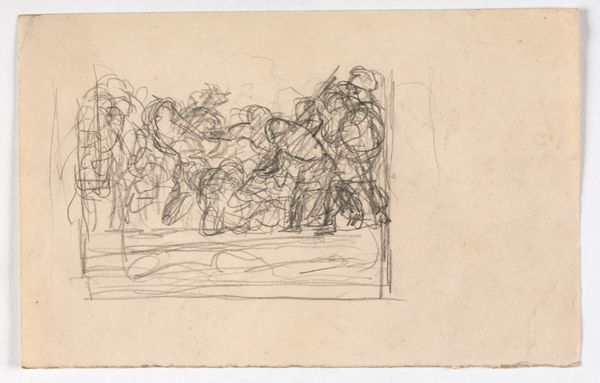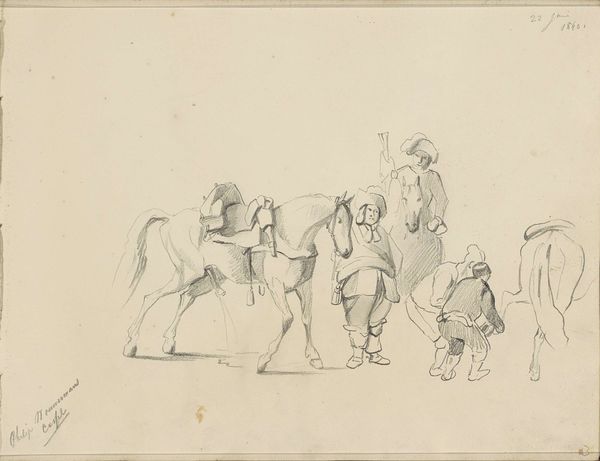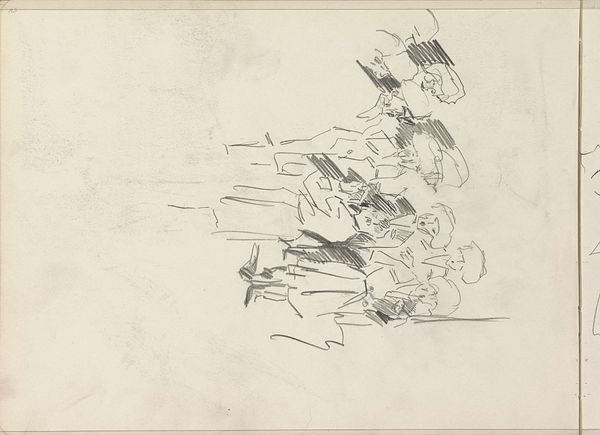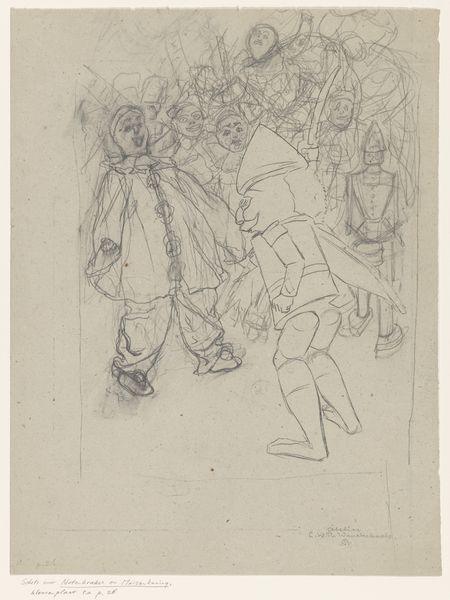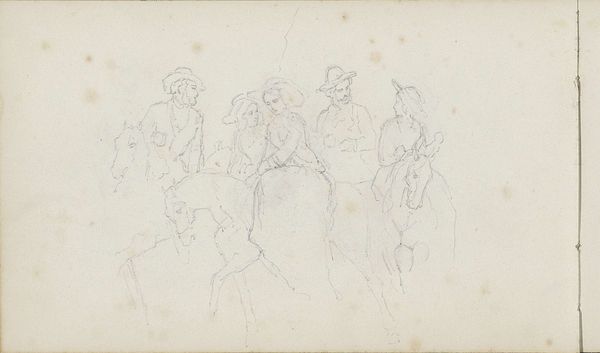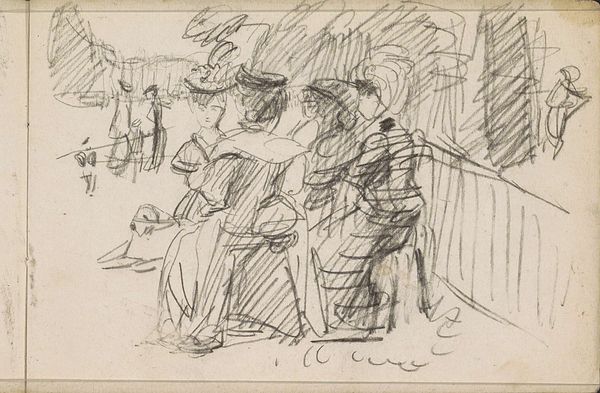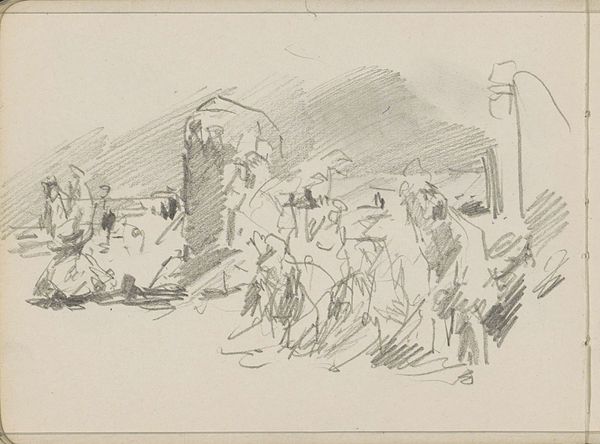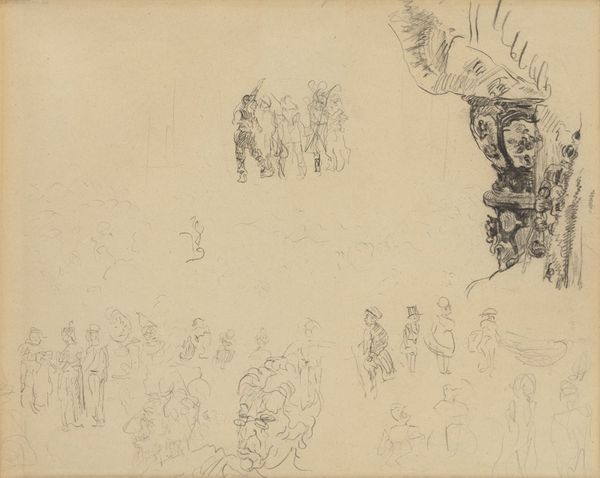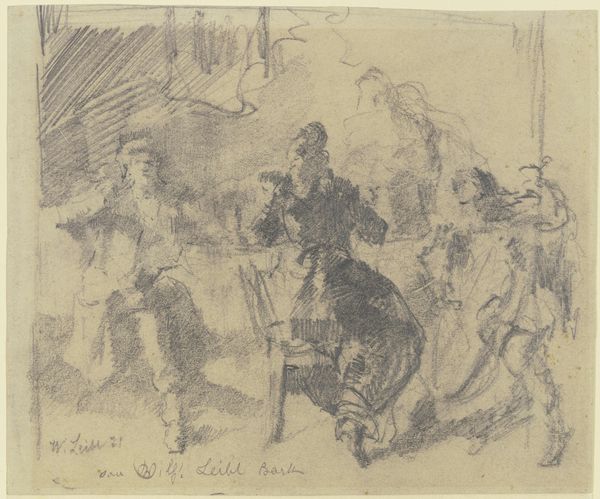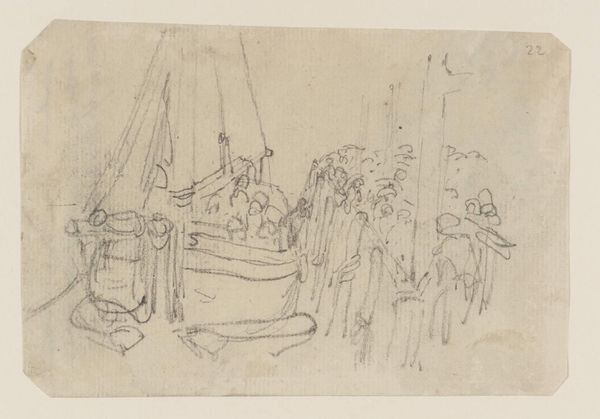
Copyright: Rijks Museum: Open Domain
Editor: This is "Playing Children and a Man on a Bench," a pencil drawing by Isaac Israels, probably done between 1875 and 1934. The figures are really loose and sketchy, almost like ghosts on the page. What do you see in this piece? Curator: The gestural quality is paramount. Note the strategic use of line and the negative space around the figures. The pencil strokes aren't simply delineating forms; they're creating a visual rhythm, a staccato effect. Consider how the artist uses hatching to suggest volume, albeit in a fragmented manner. What relationship do you perceive between the various forms within the composition? Editor: I see that the cross-hatching gives the figures depth. I'm struck by the contrast between the man, who appears static and solid in his posture, and the energy of the children. It feels very unbalanced. Curator: Indeed. The contrast provides the visual interest, wouldn't you say? Examine the orientation of lines and their relation to the perceived weight of form. Even the lightest mark contributes to the structural logic. Do you see how the horizontal lines of the bench stabilize the composition in relation to the frenetic scribbles in other portions of the work? Editor: Yes, I can see that now! So even though it looks unfinished, every line is important for the piece to work? Curator: Precisely. One might go so far as to read this piece as a series of related visual concepts, with line, value, and implied space being paramount. Editor: That's a great point; it’s less a picture of a scene and more an exploration of how to use lines! Thanks for sharing. Curator: My pleasure, the true value of any piece exists in its aesthetic contribution to our world of seeing.
Comments
No comments
Be the first to comment and join the conversation on the ultimate creative platform.

